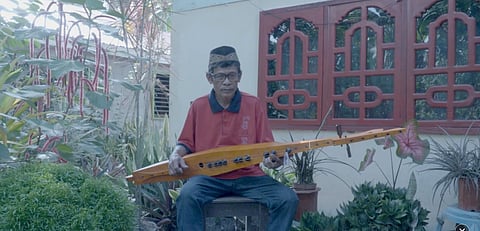
- NEWS
- the EDIT
- COMMENTARY
- BUSINESS
- LIFE
- SHOW
- ACTION
- GLOBAL GOALS
- SNAPS
- DYARYO TIRADA
- MORE

Ethnomusicologist and University of the Philippines professor Jose Buenconsejo recently released on DVD format his latest series of documentary films on indigenous Philippine music.
Music-Cultural Flows and Exchanges in Pulangi River, Maguindanao: The Making and Circulation of Gongs and Bamboo Music and Verbal Arts Along the Pulangi-Cotabato River consists of four documentaries that spotlight musical instruments kulintang and kudyapi, their makers and the musical culture bearers of the ethnic groups Maguindanao, Teduray and Dulangan Manobo in the provinces of Maguindanao del Norte, Maguindanao del Sur and Sultan Kudarat.
The films talk “about the sharedness of indigenous traditional music traditions in a particular region of the country despite group differences in beliefs and ethnicity across a broad division in landscape, notably upriver (ilaya) and downriver (ilaud) areas in Southern Mindanao,” said Buenconsejo.
“Through a non-sensationalized, simple and clear visual approach to documentary film, the series focuses on the everyday life of ordinary culture bearers of indigenous music against a background of their day to day contemporary cultural economic activities,” he added.
The series is a product of field researches in the aforementioned areas which were undertaken through a research grant from the National Research Council of the Philippines.
The documentaries include Si Tokan: Ang Manggagawa ng Kulintang sa Maguindanao Ilaya (Tokan: Kulintang Maker from Upriver Maguindanao); Ang Kapitana: Ang Kababaihan na Teduray sa Musika at Ritwal, Upi, Maguindanao (The Captain: Women in Teduray Music and Ritual, Upi, Maguindanao); Water of the Mountains: Traditional Music among the Manobo Dulangan; and Karatuan: Kudyapi sa Lumang Maguindanao(Karatuan: Kudyapi of Old Maguindanao).
An interesting finding of Buenconsejo is that the “concept of gapped pentatonic scale, reminiscent of the one plus three holes of vertical flute called dongxiao of Southern China around the third century AD” most likely came from the Philippine islands.
He contends that this is because “of the density of use of this instrument in the country, the type of bamboo species endemic to the country, and its rudimentary mimetic nature that suggests its antiquity.”
Buenconsejo’s documentary on Sama indigenous music in Tawi-Tawi, Seven Dances of Life: Pledges to Others, was nominated in the documentary category of the 41st Gawad Urian in 2018.
Last year, his documentary, Water of the Mountains: Myth, Song, and Divination of the Obo, Manobo Dulangan, and Tboli in Sultan Kudarat, Mindanao, won the Best Educational Film category of the New Lotus International Film and Script Festival.
For more information, email jose.buenconsejo@gmail.com
